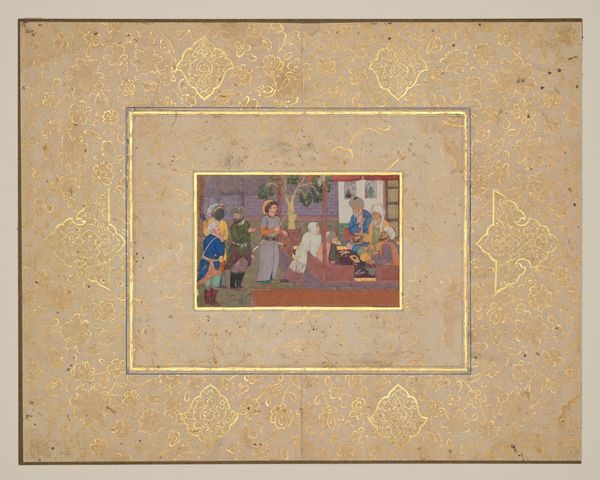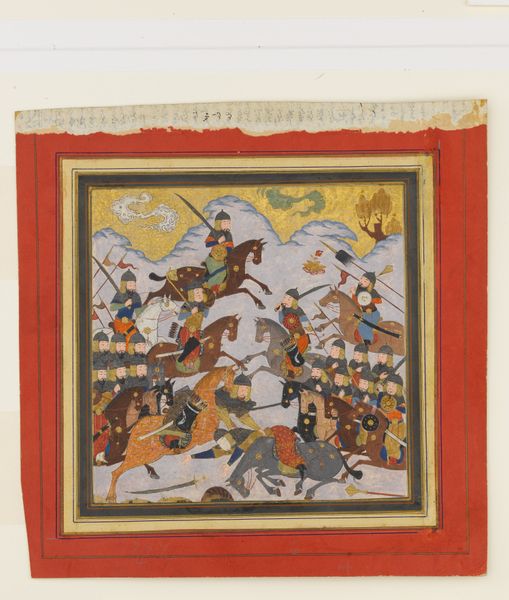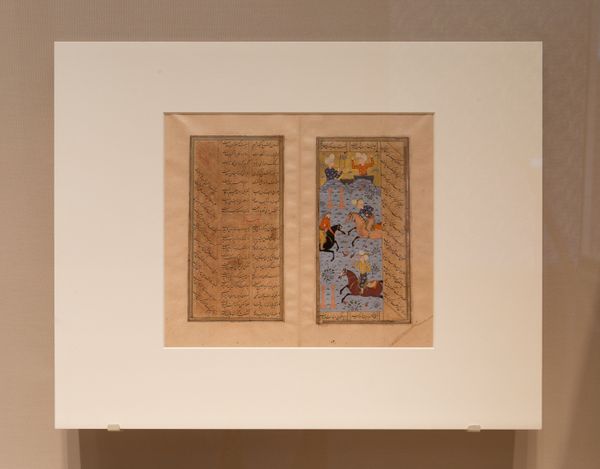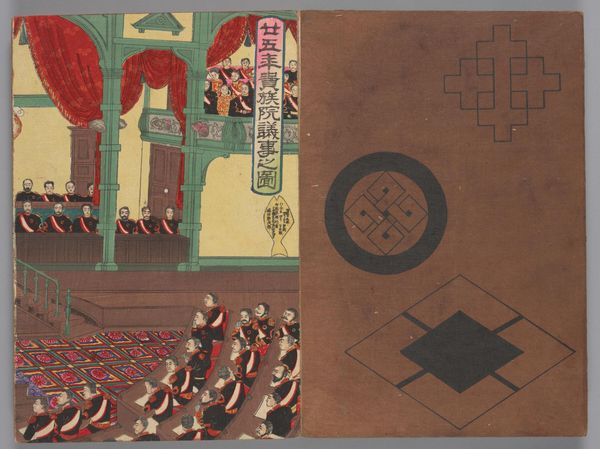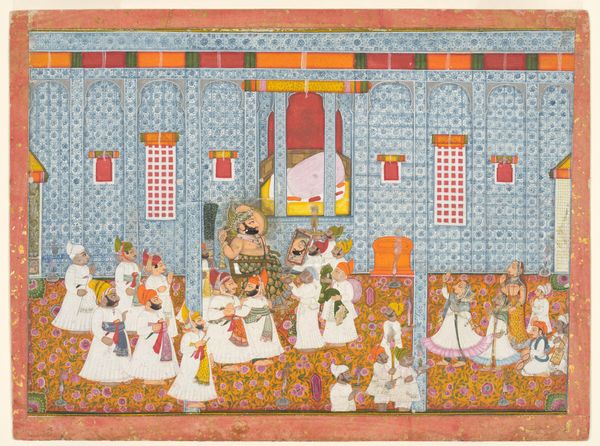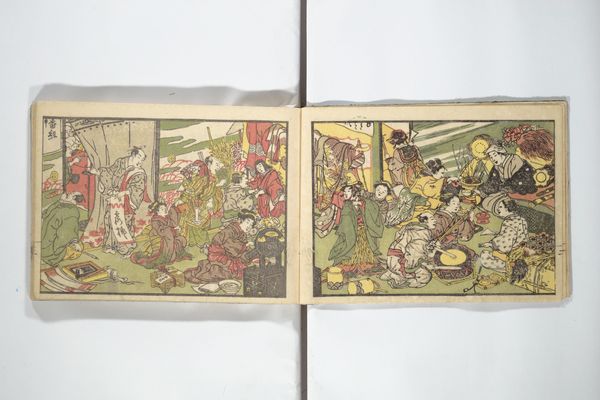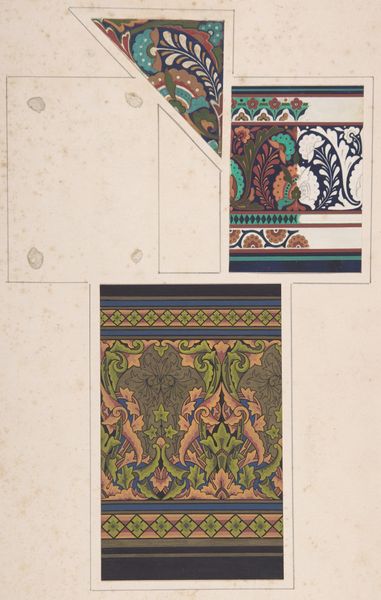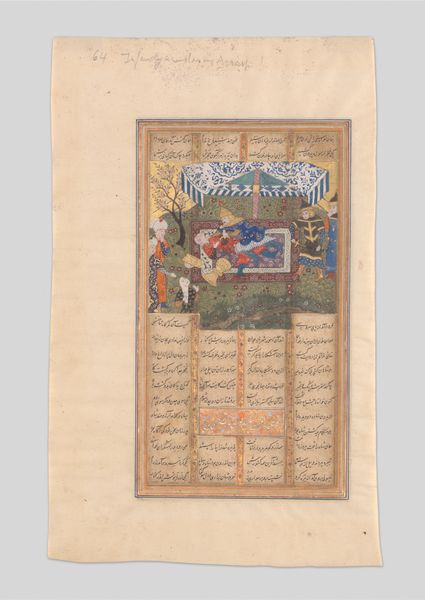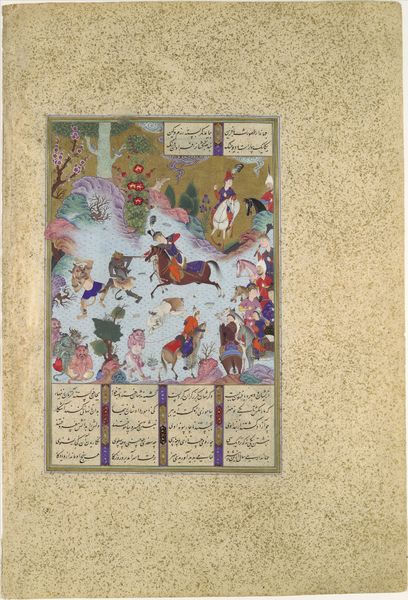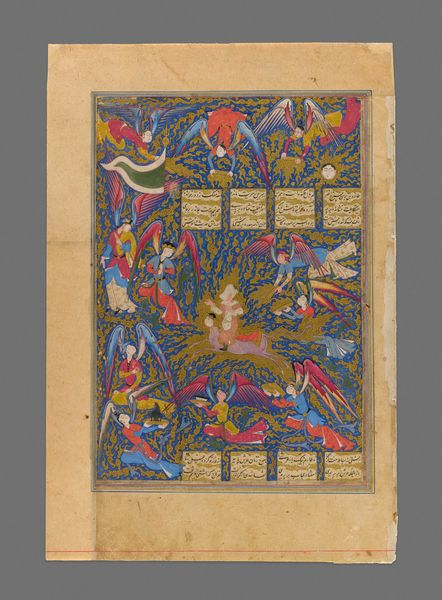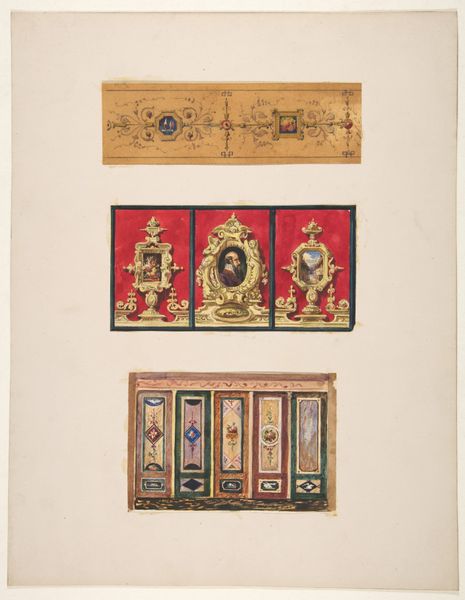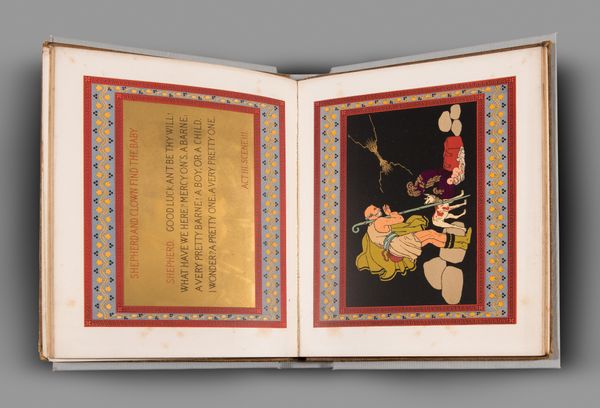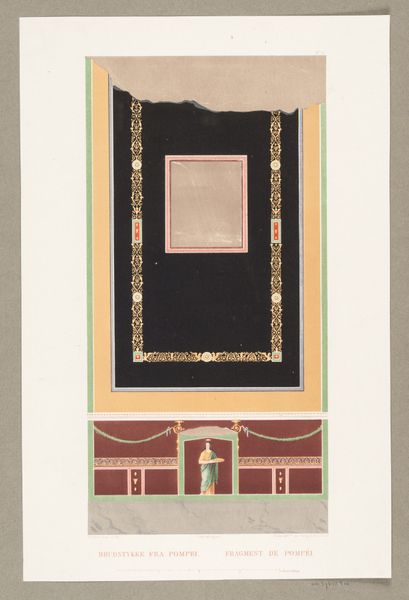
Maharana Amar Singh II Is Shown Two Silver Elephants 1695 - 1715
0:00
0:00
painting
#
portrait
#
water colours
#
painting
#
asian-art
#
history-painting
#
miniature
Dimensions: 18 x 13 in. (45.7 x 33 cm)
Copyright: Public Domain
Sometime between 1680 and 1725, the artist known as Stipple Master painted Maharana Amar Singh II in watercolor, ink and gold on paper. As his nickname suggests, the artist has a distinct technique. Close examination reveals a stippling effect where small dots of pigment are applied in successive layers to build up tone and depth. The stippling effect gives the painting a rich texture that can be viewed up close. The colors appear more luminous, capturing the opulence of the court. Note the use of gold to further highlight the wealth and status of the figures depicted. This painting is more than a visual depiction of a historical event. It is a product of artistic skill and a courtly culture that supported the arts. The artist’s technique transformed basic materials into a compelling image that invites us to see how the production process shapes the final form. This challenges conventional distinctions between art and craft.
Comments
No comments
Be the first to comment and join the conversation on the ultimate creative platform.
